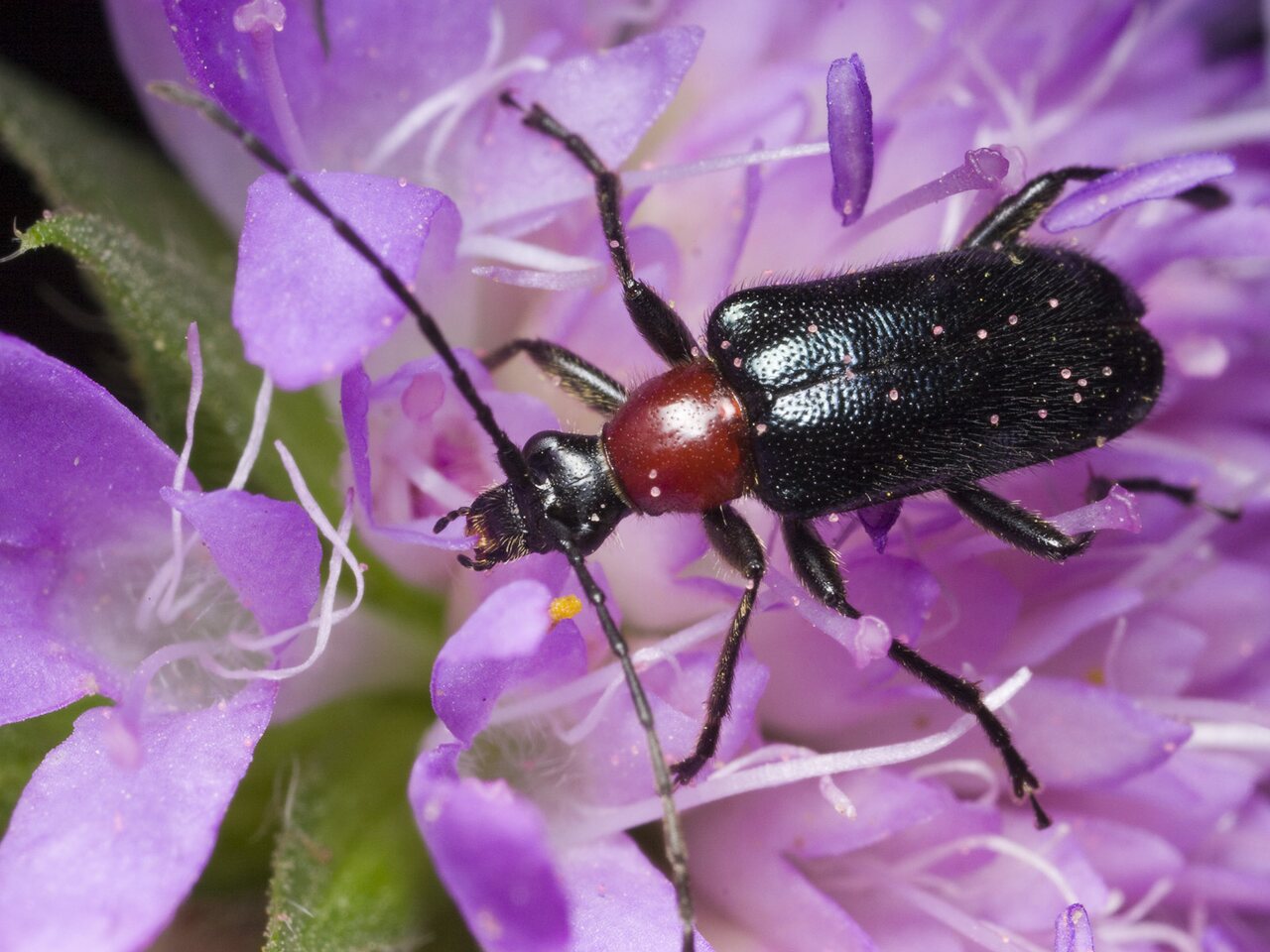
Dinoptera collaris · ąžuolinis žievininkas
on Knautia arvensis - ant dirvinės buožainės
- Acmaeops collaris
- Karminrother Schalbockkäfer
- ąžuolinis žievininkas, ąžuolinis medkirtis
- Roodblauwe smalboktor
- rozpylak zwyczajny
- rödhalsad kulhalsbock, rödhalsad blombock
- en.wikipedia.org/wiki/Dinoptera_collaris
- ukbeetles.co.uk/dinoptera-collaris
- gbif.org/species/1129494
This is a very widespread Palaearctic species; it is locally common in lowlands and low mountain altitudes from the Iberian Peninsula to western Siberia and northwest China, it occurs throughout Asia Minor, Syria and Iran and is present on Sicily and many of the Greek islands but is otherwise absent from the Mediterranean islands and North Africa. In Europe it occurs from the Mediterranean north to the UK and some central provinces of Norway and Sweden; it is generally most common in upland and mountain regions and more scattered and local in lowland areas but nonetheless may be abundant in any suitable habitat across central Europe.
Adults are diurnal, they are generally associated with open deciduous woodland but they fly well and sometimes occur in large numbers on flowers in open grassland etc. remote from wooded areas, they feed on pollen and nectar of a wide variety of plants including trees and shrubs but most frequently on various umbels and other herbaceous plants and they are often common on hawthorn blossom. Mating occurs from early in the season and females oviposit among cracks or bark in trunks and branches infested with galleries of other wood-boring insects, usually visiting several sites to do so. Larvae live under loose bark or within old galleries of other insects, probably consuming frass and softer parts of gallery walls, they are agile and very active, being able to crawl on the surface of bark and walk between feeding sites, and they often choose thin dry and dry branches in which to do so. Larval development extends over several years; they develop through the first summer, overwinter under loose bark and complete their development during the following spring and summer, during August or September they emerge from the bark and fall to the ground where they will find a suitable site to enter the ground and prepare a chamber in which to overwinter for a second time. Pupation occurs in the larvae chamber during the following spring and adults emerge from April, depending on conditions.
Kūnas 7 - 9 mm ilgio. Antsparniai įvairios spalvos – nuo tamsiai mėlynų iki mėlynai juodų. Priešnugarėlė raudona, kartais juoda. Pilvelis raudonas. Vabalai skraido gegužės – liepos mėn. Randami ant šermukšnių, erškėčių ir įvairių skėtinių augalų žiedų. Lervos vystosi trūnijančioje ąžuolo žievėje.
Subfamily: Lepturinae · grakštenėnai
‥
0 comments
Add a comment